| 
| This body position is of a wolf when it is attacking. |
| 
| This body position is of a wolf when it is defensive or is feeling threatened. |
| 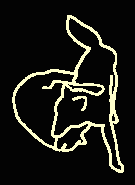
| This body position is of wolves fighting with the top wolf pinning the other wolf to the ground. |
| 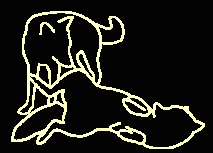
| The body position of the wolf laying down is an example of a wolf being passive submissive |
| 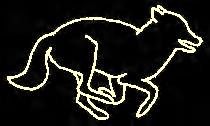
| This type body position when running indicates that the wolf is playing. |
| 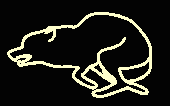
| This type body position when running indicates that the wolf is running in fear |
| 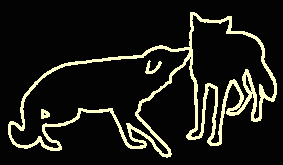
| The wolf on the left side of this illustration demonstrates the way a wolf looks when it is in active submission. |
| 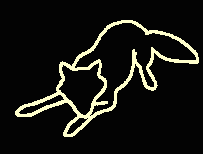
| This wolf is simply playing. |
| 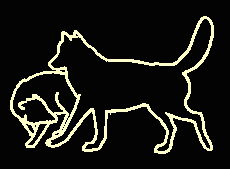
| This shows how a yearling would submit to a fully dominant wolf. |
| 
| This body posture indicates that the wolf is feeling both fear and aggressiveness. |
| 
| This high tail position indicated the wolf is the dominant wolf, most likely an alpha male or female (the ones that lead the pack). |
| 
| This horizontal stiffly held tail position indicated the wolf is going to attack or is hunting. |
| 
| The wagging of a wolf's tail in this manner indicates that the wolf is relaxed. |
| 
| This somewhat drooped tail position indicated the wolf is relatively relaxed. |
| 
| This drooped tail position indicated the wolf is even more relaxed. |
| 
| This half tail tuck along with a partially arched back indicated that a wolf is humbling itself to a more dominant wolf and is a form of submission. |
| 
| This fully tucked tail along with a highly arched back shows that a wolf is extremely in fear of something (a more dominant wolf) and is another form of submission. |
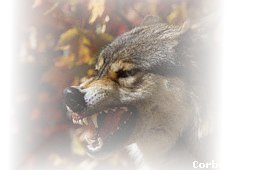 | This is usally the expresion that is used when a wolf feels threatened and/or is afraid. With its ears pulled back and bareing its teeth. |
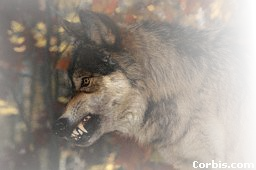 | This expression is usally shown towards mistaking Subordinates, or if another wolf has entered the territory (The alpha is usally the one to kick the introuder out). With its ears pulled forward and bareing its teeth, is showing aggresion. |

 Free Forum Hosting
Free Forum Hosting